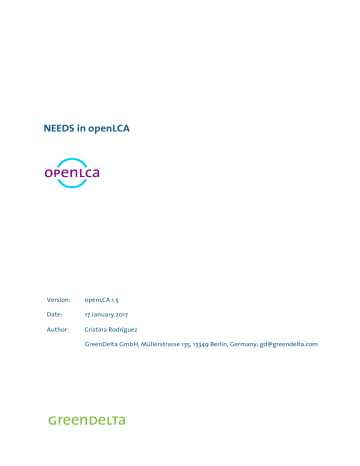

Extensibility of flows is poor because patterns in flow naming are generally complex and inconsistent because user-defined nomenclature is used. Many lack important identifying information including context information (environmental compartments), directionality (LCIA methods generally do not provide this information), additional clarifiers such as CAS numbers and synonyms, unique identifiers (like UUIDs), and supporting metadata. The vast majority were typed as “Element or Compound” or “Group of Chemicals” with less than 10% coming from the other seven types.
#DUMMY FLOWS IN OPENLCA SOFTWARE#
Over 134,000 elementary flows from six LCI databases, three LCIA methods, and three LCA software tools were collected and evaluated from European, North American, and Asian Pacific LCA sources. Twelve criteria were defined to evaluate flows against principles of clarity, consistency, extensibility, translatability, and uniqueness. A typology of elementary flows was created to identify flows by types such as chemicals, minerals, land flows, etc., to facilitate differential analysis. Methodsįlows were collected in a standard template from various life cycle inventory, impact method, and software sources. With the goal of achieving a global network of LCA databases, a critical review of elementary flow usage and management in LCA data sources was performed. Elementary flows must be consistent across a life cycle inventory for accurate inventory analysis and must correspond with impact methods for impact assessment. A standard list is not used across all sources, as data providers now manage these flows independently. Elementary flows are essential components of data used for life cycle assessment.


 0 kommentar(er)
0 kommentar(er)
